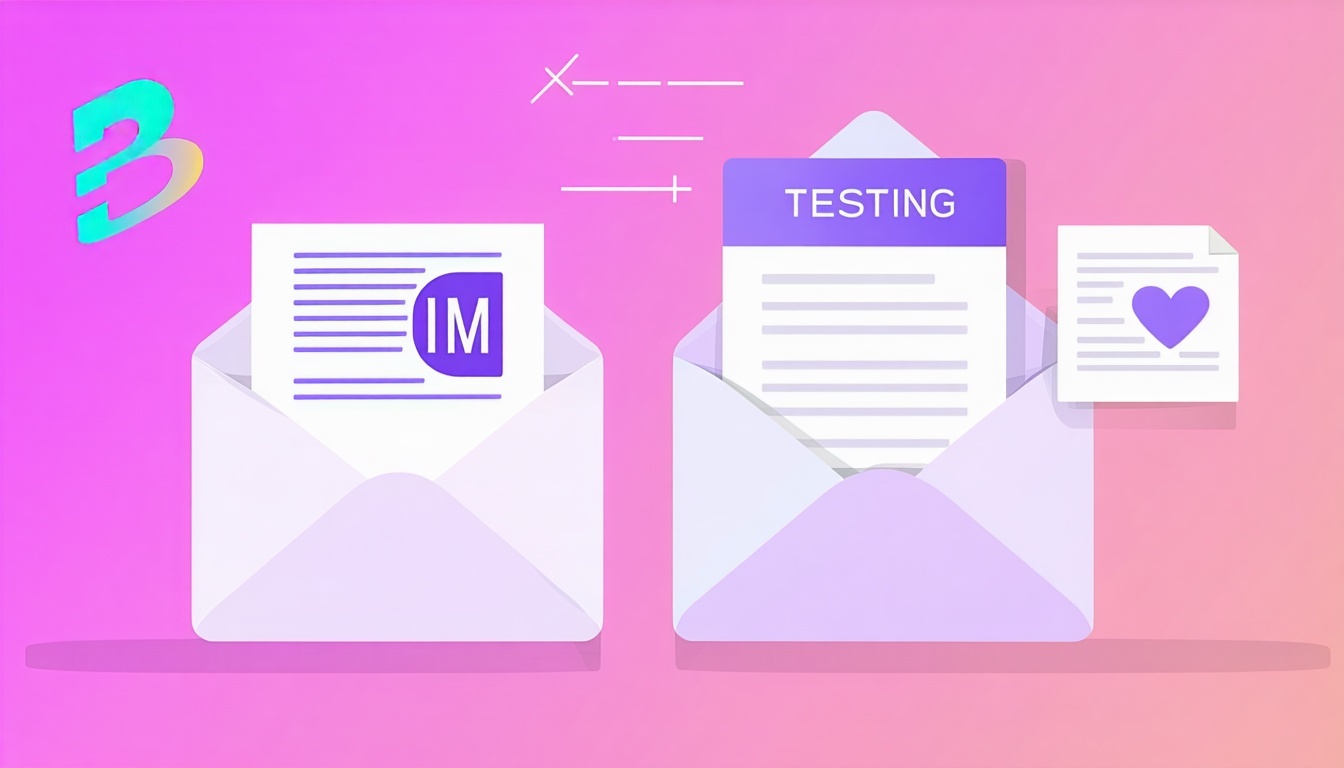
A/B testing with BIMI: Measuring the impact on different audience segments
A/B testing is a powerful method for understanding how BIMI influences engagement and brand perception across your subscriber base.
Why A/B Testing Matters for BIMI
A/B testing allows you to compare the performance of emails with and without BIMI logos, helping you understand BIMI’s true impact on open rates, click-throughs, and brand trust. By segmenting your audience, you can see which groups respond most positively and optimize your email strategy accordingly.
Technical Challenges and Workarounds
Current Limitations
- A/B Testing Limitation: As of 2025, most email platforms and mailbox providers do not support BIMI selector functionality, which makes traditional A/B testing—sending BIMI and non-BIMI emails from the same domain—difficult.
- Toggle Restriction: You cannot easily toggle BIMI on/off for the same domain in a single campaign.
Practical Testing Workarounds
- Historical Comparison: Track open and click rates for a regular campaign (e.g., a monthly newsletter) before and after BIMI implementation. Compare results to estimate BIMI’s impact.
- Subdomain Testing: Implement BIMI on one subdomain and leave another without BIMI. Send identical campaigns from each and compare engagement metrics.
- Separate Mail Streams: Use different domains or subdomains for different campaigns or segments, applying BIMI to one and not the other to measure changes in engagement.
- “Declination to Publish” Record: For advanced users, publish a BIMI “declination to publish” record on the main domain and a standard BIMI record on a test selector, then use custom headers to direct certain emails to use the test selector.
Setting Up Audience Segments for Testing
- Define segments: Base segmentation on engagement level, geography, demographics, or behavior.
- Ensure statistical significance: Each test group should be large and engaged enough to yield meaningful results.
- Avoid narrow segments: Overly narrow segments can skew results and reduce reliability.
Metrics to Track During BIMI A/B Testing
- Open Rate: Are recipients more likely to open emails with a visible brand logo?
- Click-Through Rate (CTR): Does BIMI increase clicks on links or calls to action?
- Conversion Rate: Are BIMI-enabled emails driving more purchases or sign-ups?
- Brand Recall and Trust: Consider pre- and post-test surveys to measure changes in brand perception.
- Inbox Placement: Monitor deliverability to ensure BIMI isn’t affecting inbox rates.
Best Practices for Reliable BIMI Testing
- Run tests over several sends: Account for variability and seasonality.
- Document all variables: Track subject lines, content, and timing to ensure BIMI is the main difference.
- Use BIMI audience insights tools: Leverage solutions like Valimail’s BIMI Audience Insights Report to estimate reach and analyze provider-specific results.
- Monitor compliance: Track DMARC and BIMI status throughout testing.
Common Pitfalls and How to Avoid Them
- Small or unengaged segments: Testing with too small or unengaged segments can produce unreliable results.
- Technical issues: Overlooking issues such as the logo not displaying can skew findings.
- Uncontrolled variables: Not accounting for changes in content or timing may confound results.
Want to design a robust BIMI A/B test or need help interpreting results?
Our consultancy can help you set up, monitor, and analyze your BIMI impact across audience segments.
Find more guidance in our BIMI testing and audience segmentation FAQ section.
A/B testing BIMI is the best way to measure its real-world impact on your audience. By segmenting your list and tracking key metrics, you can unlock actionable insights and maximize your brand’s email performance.


